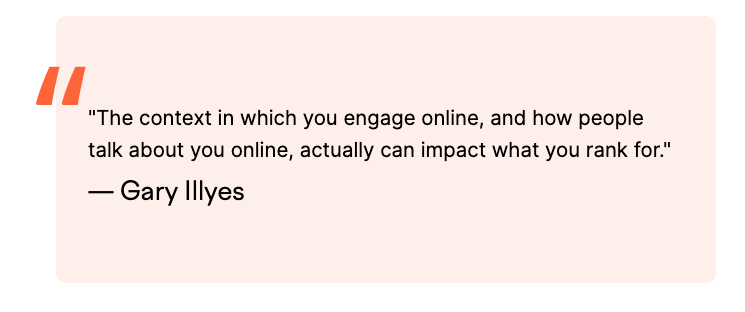“Why is brand strategy so important?” is a question we are often asked – and one that is tough to answer. Not because there isn’t an answer, but because there is so much we could say on the subject it is difficult to condense it down.
Usually, we try to tailor the answer to the person asking the question, and how it would impact their business – but in this post, we will try and present the whole case for a well-planned brand strategy as concisely as we can.
First things first though, we need to clear something up. The terms “brand” and “brand strategy” are often used interchangeably and a little bit misunderstood. They tend to get used in conversations without people having a really clear understanding of what they mean, and how they actually differ from each other.
Let’s change that.
What’s the difference between your brand as a whole and your brand strategy?
Your brand is your single most valuable asset.
Think about Adidas for example. Most trainers cost a few pounds to make, but when Adidas puts their logo on them, people are willing to pay hundreds of pounds to get them. In fact, the Adidas brand has recently been valued at about $12,070 million dollars.

So, it should come as no surprise that one of the first things we recommend a business does is to create a strong brand. Now, most people think this means a great-looking logo and a memorable name – and yes, these things are important. But what they fail to realise is that a brand is so much more than a name or logo.

Your brand is something that can’t be defined by being touched or seen yet it is one of the most powerful parts of your business. It is the feeling the customer gets when they think of your business – and this could be good or bad, strong or weak.
Interbrand, a global branding company, defines a brand as “the sum of all expressions by which an entity intends to be recognised.” It is the emotional connection that your customer has with your business and that is shaped by your name, logo, visual and verbal identity, all of your marketing, and most of all, the experiences that customers have with you.
If you have a strong brand, then it can:
- Generate customer loyalty through word-of-mouth marketing
- Set you apart from your competitors
- Allow you to command more premium pricing for your products or services
Interestingly enough, research by doctors in Germany using functional magnetic resonance imaging (fMRI) has shown that “strong brands elicit strong activity in our brains.”
OK, so now you have a pretty good idea about what a “brand” is and why it is important to your business.
The problem is, your brand is something that is created in the mind of the consumer – which means it is really out of your direct control. Don’t worry though, you can take actions to change how customers feel about your brand, indirectly. In fact, almost everything you do in your business affects your brand in some way – both positively and negatively.
But how do you know what actions you should take to strengthen your brand? Or even what type of brand you want to have?
This is where brand strategy comes in.
Brand strategy is the long-term plan we work together to put into place to achieve a series of long-term goals that result in an increase in brand awareness, brand equity and brand sentiment.
In short, a brand strategy helps you decide what to do and what not to do.
Why is brand strategy important?
The fact is, if you want to create a great brand then you need to have a brand strategy.
A strong brand strategy not only defines who you are as a business and helps you focus on your long-term goals, but also gives you a benchmark to measure your progress against. On the flip side, if you don’t have a brand strategy, then how do you know whether your brand is moving in the right direction or not?
Some of the tangible benefits of a robust brand strategy are:
- It helps you communicate your core values. Research has shown that customers don’t buy what you do, they buy what you stand for.
- It can help to identify weaknesses in your brand experience. If your customer experience is not consistent, you will struggle to build loyalty and trust.
- It can help you to filter out any ideas that may actually end up damaging your brand-building efforts.
- It creates accountability amongst employees, ensuring everyone is working towards the same goals and staying on track. It also means if you do stray off track, you can refocus your efforts and get back on track faster
- You can achieve laser focus in your marketing efforts as you know who you are targeting, what they care about, and how to speak to them – maximising the ROI of your marketing efforts.
- It will help your designers and creators do more effective work as they can compare their ideas to how well they reflect your strategy.
What are the components of an effective brand strategy?
There is no one size fits all when it comes to brand strategy. The right brand strategy for your business will depend on the size and nature of your business. However, there are certain components that are always included – and these are:
- Core values. The reason you are in business in the first place (besides to make money) – these are the beliefs that will embody everything you do.
- Positioning statement. This sets out how you want to position yourself in the minds of customers.
- Target customer profiles. Laser-focused profile of who exactly you are trying to attract to your business. You can’t be everything for everyone.
- Brand promise. This is the message that speaks to your brand audience and tells them what to expect when they interact with your brand. It should be simple, relevant, inspiring, credible and different.
- Look and feel. As humans, we are drawn to beautiful things, and so great-looking design and strong copywriting can make a huge difference to the success of your company.
- Brand touchpoints. These are the points of contact between your business and consumers and can include:
- Website
- Social media profiles
- Product packaging
- Email newsletters
- Brick and mortar stores
- Customer service lines
- Voice and tone of the brand plus specific messaging. Your brand strategy should provide a loose framework for how you communicate, such as whether your tone of voice is fun or serious for example.
Here at Zool, we can help you to create brands that not only attract customers but also set you apart from your competition. We’d love to hear from you if you want to find out more.
Why is a well-planned brand strategy so important?
Brand Strategy Branding / Jan 20, 2021
“Why is brand strategy so important?” is a question we are often asked – and one that is tough to answer. Not because there isn’t an answer, but because there is so much we could say on the subject it is difficult to condense it down.
Usually, we try to tailor the answer to the person asking the question, and how it would impact their business – but in this post, we will try and present the whole case for a well-planned brand strategy as concisely as we can.
First things first though, we need to clear something up. The terms “brand” and “brand strategy” are often used interchangeably and a little bit misunderstood. They tend to get used in conversations without people having a really clear understanding of what they mean, and how they actually differ from each other.
Let’s change that.
What’s the difference between your brand as a whole and your brand strategy?
Your brand is your single most valuable asset.
Think about Adidas for example. Most trainers cost a few pounds to make, but when Adidas puts their logo on them, people are willing to pay hundreds of pounds to get them. In fact, the Adidas brand has recently been valued at about $12,070 million dollars.

So, it should come as no surprise that one of the first things we recommend a business does is to create a strong brand. Now, most people think this means a great-looking logo and a memorable name – and yes, these things are important. But what they fail to realise is that a brand is so much more than a name or logo.

Your brand is something that can’t be defined by being touched or seen yet it is one of the most powerful parts of your business. It is the feeling the customer gets when they think of your business – and this could be good or bad, strong or weak.
Interbrand, a global branding company, defines a brand as “the sum of all expressions by which an entity intends to be recognised.” It is the emotional connection that your customer has with your business and that is shaped by your name, logo, visual and verbal identity, all of your marketing, and most of all, the experiences that customers have with you.
If you have a strong brand, then it can:
- Generate customer loyalty through word-of-mouth marketing
- Set you apart from your competitors
- Allow you to command more premium pricing for your products or services
Interestingly enough, research by doctors in Germany using functional magnetic resonance imaging (fMRI) has shown that “strong brands elicit strong activity in our brains.”
OK, so now you have a pretty good idea about what a “brand” is and why it is important to your business.
The problem is, your brand is something that is created in the mind of the consumer – which means it is really out of your direct control. Don’t worry though, you can take actions to change how customers feel about your brand, indirectly. In fact, almost everything you do in your business affects your brand in some way – both positively and negatively.
But how do you know what actions you should take to strengthen your brand? Or even what type of brand you want to have?
This is where brand strategy comes in.
Brand strategy is the long-term plan we work together to put into place to achieve a series of long-term goals that result in an increase in brand awareness, brand equity and brand sentiment.
In short, a brand strategy helps you decide what to do and what not to do.
Why is brand strategy important?
The fact is, if you want to create a great brand then you need to have a brand strategy.
A strong brand strategy not only defines who you are as a business and helps you focus on your long-term goals, but also gives you a benchmark to measure your progress against. On the flip side, if you don’t have a brand strategy, then how do you know whether your brand is moving in the right direction or not?
Some of the tangible benefits of a robust brand strategy are:
- It helps you communicate your core values. Research has shown that customers don’t buy what you do, they buy what you stand for.
- It can help to identify weaknesses in your brand experience. If your customer experience is not consistent, you will struggle to build loyalty and trust.
- It can help you to filter out any ideas that may actually end up damaging your brand-building efforts.
- It creates accountability amongst employees, ensuring everyone is working towards the same goals and staying on track. It also means if you do stray off track, you can refocus your efforts and get back on track faster
- You can achieve laser focus in your marketing efforts as you know who you are targeting, what they care about, and how to speak to them – maximising the ROI of your marketing efforts.
- It will help your designers and creators do more effective work as they can compare their ideas to how well they reflect your strategy.
What are the components of an effective brand strategy?
There is no one size fits all when it comes to brand strategy. The right brand strategy for your business will depend on the size and nature of your business. However, there are certain components that are always included – and these are:
- Core values. The reason you are in business in the first place (besides to make money) – these are the beliefs that will embody everything you do.
- Positioning statement. This sets out how you want to position yourself in the minds of customers.
- Target customer profiles. Laser-focused profile of who exactly you are trying to attract to your business. You can’t be everything for everyone.
- Brand promise. This is the message that speaks to your brand audience and tells them what to expect when they interact with your brand. It should be simple, relevant, inspiring, credible and different.
- Look and feel. As humans, we are drawn to beautiful things, and so great-looking design and strong copywriting can make a huge difference to the success of your company.
- Brand touchpoints. These are the points of contact between your business and consumers and can include:
- Website
- Social media profiles
- Product packaging
- Email newsletters
- Brick and mortar stores
- Customer service lines
- Voice and tone of the brand plus specific messaging. Your brand strategy should provide a loose framework for how you communicate, such as whether your tone of voice is fun or serious for example.
Here at Zool, we can help you to create brands that not only attract customers but also set you apart from your competition. We’d love to hear from you if you want to find out more.
Array
